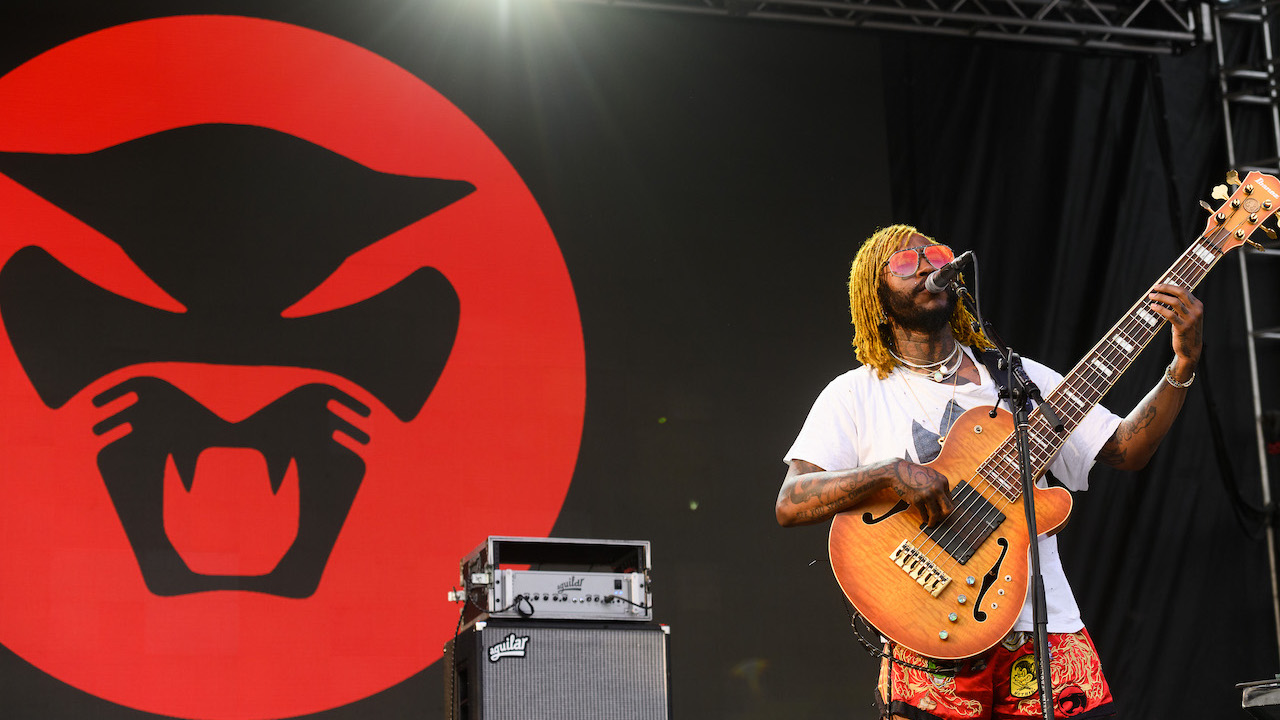Thundercat: “People are telling me to turn down, and I’m like, No! I’m trying to burn down the stage!”
The 6-string superhero on his gigantic bass tone, and how he nearly set fire to the Sydney Opera House

Melding an astounding level of technical skill with an intuitive sense of what’s possible on the bass guitar, Stephen Bruner, better known as Thundercat, has gained worldwide exposure via high profile tours with the likes of Suicidal Tendencies, Red Hot Chili Peppers, Erykah Badu and Snoop Dog.
His live bass tone is gigantic, with a search for the perfect set-up culminating in a highly-customised Ibanez 6-string signature model. As for amps, he goes for a solid option. “Aguilar’s stuff is known for being really powerful, and that’s what I need onstage. People are telling me to turn down, and I’m like, No! I’m trying to burn down the stage. That’s the whole point!”
It was in 2012, while on tour in Australia with Erykah Badu, that Thundercat’s reputation was truly put to the test when his amp actually caught on fire. Recalling the incident, he said: “There was this moment where you think everyone’s cheering, and I was like, ‘I guess I’m doing a good job!’ But then I looked back and the amp was literally on fire! It was right on the edge of having to clear the entire Sydney Opera House!”
To complete his tone, Thundercat puts his Ibanez through a pitch shifter. “Live, I’m using a DigiTech Whammy pedal with the octave up. My bass still sounds super-thick like a P-Bass, but I have to give some sense of openness, so I have to have that octave up. And that’s why my Ibanez basses are made a certain way; some basses wouldn’t do as well with chords. They’d be going all over the place.”

Made in Japan, Thundercat’s main instrument was created by Ibanez’s L.A. Custom Shop in 2012, although it’s undergoing some minor tweaks at the moment. “It’s definitely done some morphing,” he says. “I broke a couple tuning pegs, bent the neck in a little, and I’ve added a ramp in-between the pickups. It’s a small change, but it keeps my hands a bit more preserved. For now, I try to get to a place of a knowledgeable perspective with the instrument, you know, and be able to have something to say. That’s what it is.”
For more info visit theamazingthundercat.com.
Get The Pick Newsletter
All the latest guitar news, interviews, lessons, reviews, deals and more, direct to your inbox!

Nick Wells was the Editor of Bass Guitar magazine from 2009 to 2011, before making strides into the world of Artist Relations with Sheldon Dingwall and Dingwall Guitars. He's also the producer of bass-centric documentaries, Walking the Changes and Beneath the Bassline, as well as Production Manager and Artist Liaison for ScottsBassLessons. In his free time, you'll find him jumping around his bedroom to Kool & The Gang while hammering the life out of his P-Bass.
“I knew the spirit of the Alice Cooper group was back – what we were making was very much an album that could’ve been in the '70s”: Original Alice Cooper lineup reunites after more than 50 years – and announces brand-new album
“Such a rare piece”: Dave Navarro has chosen the guitar he’s using to record his first post-Jane’s Addiction material – and it’s a historic build




![[from left] George Harrison with his Gretsch Country Gentleman, Norman Harris of Norman's Rare Guitars holds a gold-top Les Paul, John Fogerty with his legendary 1969 Rickenbacker](https://cdn.mos.cms.futurecdn.net/TuH3nuhn9etqjdn5sy4ntW.jpg)





